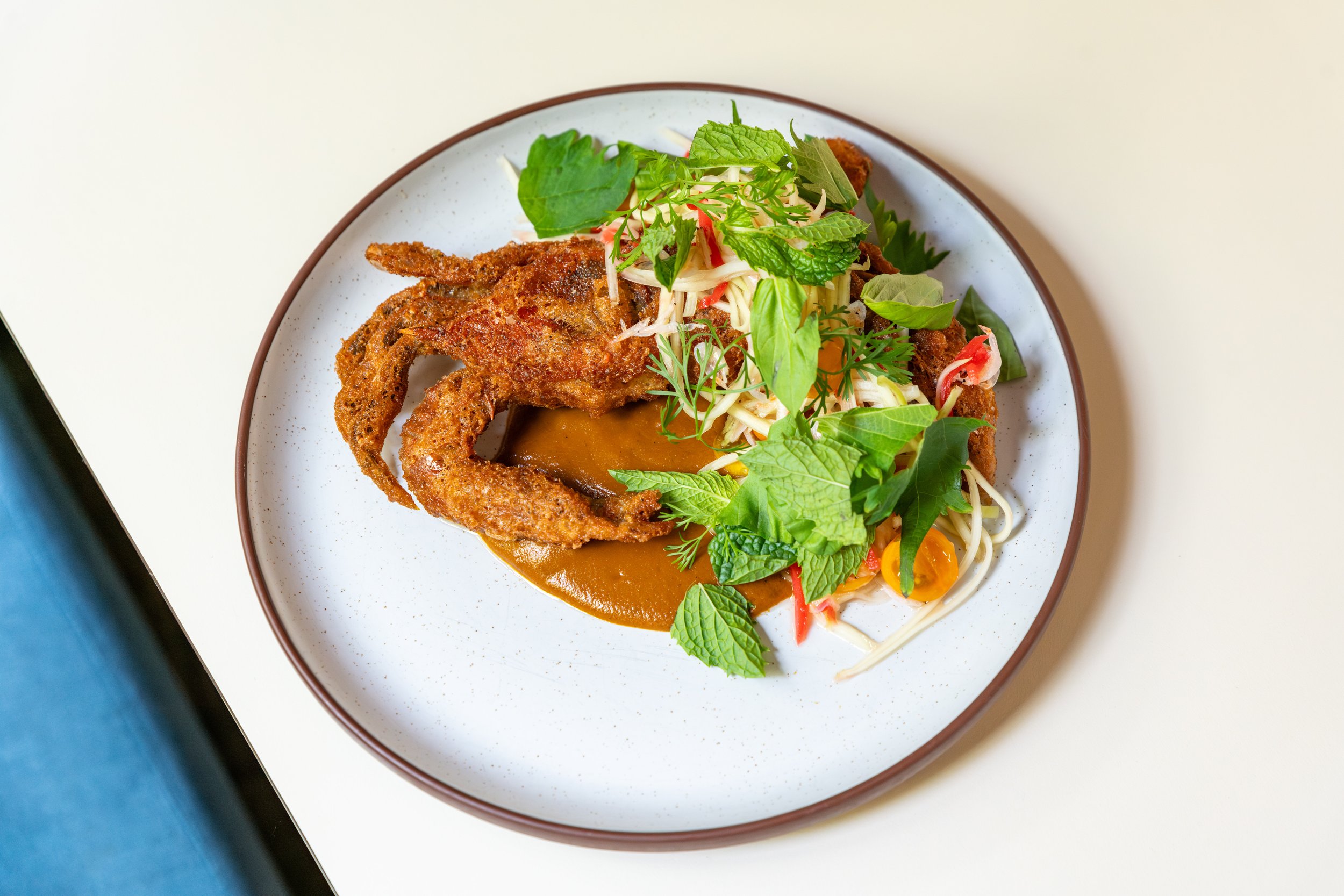Amberjack Takes Center Plate
Chef Scott Bacon brings what was once recognized as “trash fish” to the center of the plate at Magdalena in Baltimore.
Amberjack was always around when Chef Scott Bacon was growing up in Baltimore. But, while he often saw it consumed by the Black community, he rarely saw it anywhere else.
chef scott bacon of magdelena
Even at the beginning of his career, amberjack was known as a “trash fish.” During slavery and post-slavery, African Americans were only given cheap and widely available food to eat—food that was seen as undesirable at the time, like chitlins and pig feet and seafood like turtle and catfish. “Amberjack has the same history as those fish,” Bacon says. “No one wanted it.” As time has passed, Bacon has slowly seen amberjack move to become a center-of-the-plate ingredient. In support of the movement, he decided to highlight the rich, buttery fish at the Ivy Hotel’s in-house restaurant, Magdalena (full recipe here).
Whenever he’s creating a new dish, Bacon spends time experimenting with different cooking styles and textures, “especially in a dish that has a lot of flavors and components like this one does,” he says. He drew inspiration from the African diaspora and infused with in Asian and Southern elements to create this one-of-a-kind meal.
Sorghum-marinated Amberjack
One of Bacon’s favorite things about cooking is taking a relatively affordable ingredient like amberjack, and “making something very special out of it.” He marinates the amberjack in a blend of shio koji, sorghum, miso, and soy sauce for a subtle touch of umami and earthy sweetness. It gets a quick char on the coal-fired Konro grill then a finishing brush of the sorghum marinade. “I love the fish,” Bacon says. “It’s oily and unctuous, and marinating it like this is my favorite prep.”
Barbecue Carrots
Building on Bacon’s barbecue carrot salad at Patterson Public House, Bacon sous vides heirloom carrots with a carrot-juice-forward harissa barbecue sauce, infused with Moroccan spices like cumin, coriander, cinnamon, and Aleppo pepper.
Benne Tahini
It took Bacon a couple of years to perfect his jet-black benne tahini. He soaks the black sesame seeds overnight to soften them, then cooks them down with rice wine vinegar, honey, and sweet soy. It’s all blended with black garlic so the tahini looks as dramatically dark as squid ink.
Peanut Salad
Bacon tosses pea tendrils, chile vinaigrette, and charred scallion together to make the peanut salad. For an added crunch and a Southern twist, Bacon overcooks grits in squash dashi before dehydrating and frying them until they develop a rice-chip-like consistency. The peanut salad gets sprinkled with the puffed grits then garnished with Tokyo Bekana. “Globalization has been such a thing in cooking,” says Bacon. “So tying all these [cuisines] together has been very normal in my mind.”








